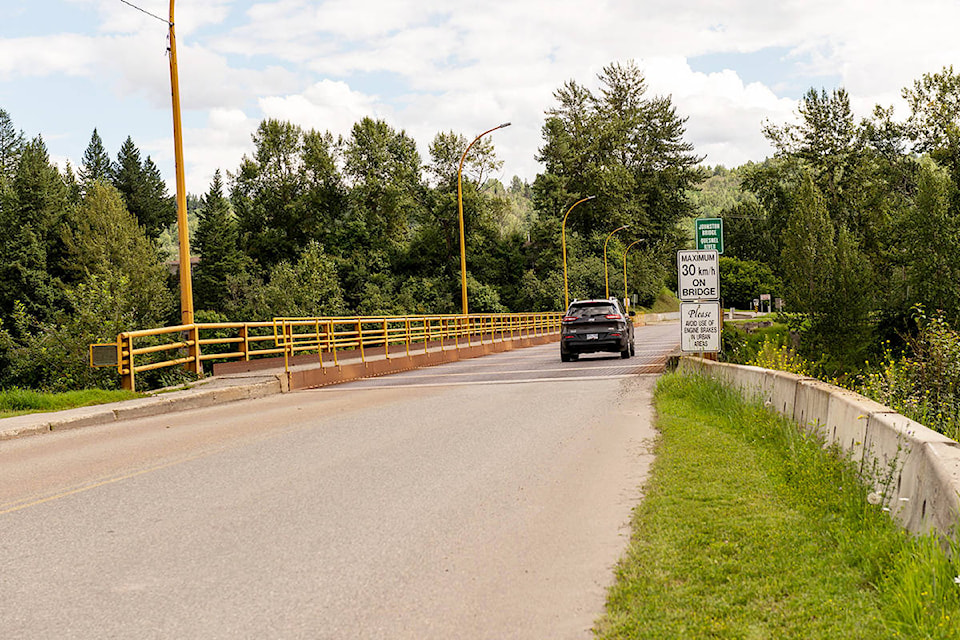By Melanie Law
Special to the Observer
The importance of having two crossings over the Quesnel River was never more apparent than on July 13, 2020, when a hit-and-run incident damaged the Quesnel River Bridge, resulting in heavy traffic delays and the bridge reduced to a single lane for around four hours.
The Johnston Bridge, which in the past would have mitigated delays, is closed to vehicles heavier than 10,000 kg, and is also currently reduced to its south-bound lane only, due to high flood waters in the Johnston Bridge Loop.
For four hours on July 13, the only way into Quesnel’s downtown core from across the river was via the one-lane Quesnel River Bridge.
Quesnel city manager Byron Johnson admitted it was a worst-case scenario: “[The Johnston Bridge lane closure] wouldn’t have been a big deal but [the incident on Quesnel River Bridge] created such a massive traffic back up — it was problems wherever you looked,” he said.
The Johnston Bridge lane closure is new this year, and was implemented to ensure the 10,000 kg load limit is not breached due to traffic congestion. During flooding of the Johnston Bridge Loop, a passing train, or even heavy traffic on the Moffat Bridge Approach, has the potential to create a bottleneck on the bridge.
“10,000kg is not that much weight. If the bridge gets backed up with cars solid stacked on it, that would exceed the load rating,” explained Johnson.
The 10,000 kg load restriction has been in place since October 2018, when a routine inspection revealed the bridge is structurally compromised.
READ MORE: Johnston Bridge to close from Oct. 3 due to “compromised” bridge structure
Although the City is committed to repairing the bridge, the lower load rating will remain for the foreseeable future.
Planning, design and repair of the bridge will take between one-and-a-half to two years — but Johnson said acquiring the funds to do the work will add considerable time to the project.
“Council does not have a bridge reserve set aside with a big pool of cash for us to get started,” he said. “We need to find that funding either through the regular capital process of taxing and saving for it, or getting a loan for it, or finding a grant for it.”
The City is looking into available grants, but the process is long and slow.
“The problem with funding windows is they come open once a year, and sometimes not that frequent for some of the grants,” Johnson explained.
An engineering firm has provided a detailed review of the scope of the repair work needed and given the City three options. The cheapest Johnson called a “Band-aid” fix, and would only repair the bridge for heavy loads for a short time. Option two would see the bridge operational over 10,000 kg for between 20 and 25 years. The third option is a complete bridge replacement project.
“We as staff will be recommending the 20-year repair, which [will cost] in the range of $4 million to $5 million, maybe slightly more,” said Johnson. The project would see the steel structure repaired, plus reinforcements placed underwater around the bridge’s piers.
He said staff will be making the recommendation to Quesnel City Council at a meeting in August 2020, after which staff will be directed on which grants to seek out.
Although he admitted the bridge replacement option would be great, Johnson said a project of that scope would cost between $12 million and $16 million – money the City simply does not have.
The 20-year repair would see the bridge structure largely unchanged, with two lanes with drop-through steel decking.
Do you have a comment about this story? email:
editor@quesnelobserver.com
Like us on Facebook and follow us on Twitter.
